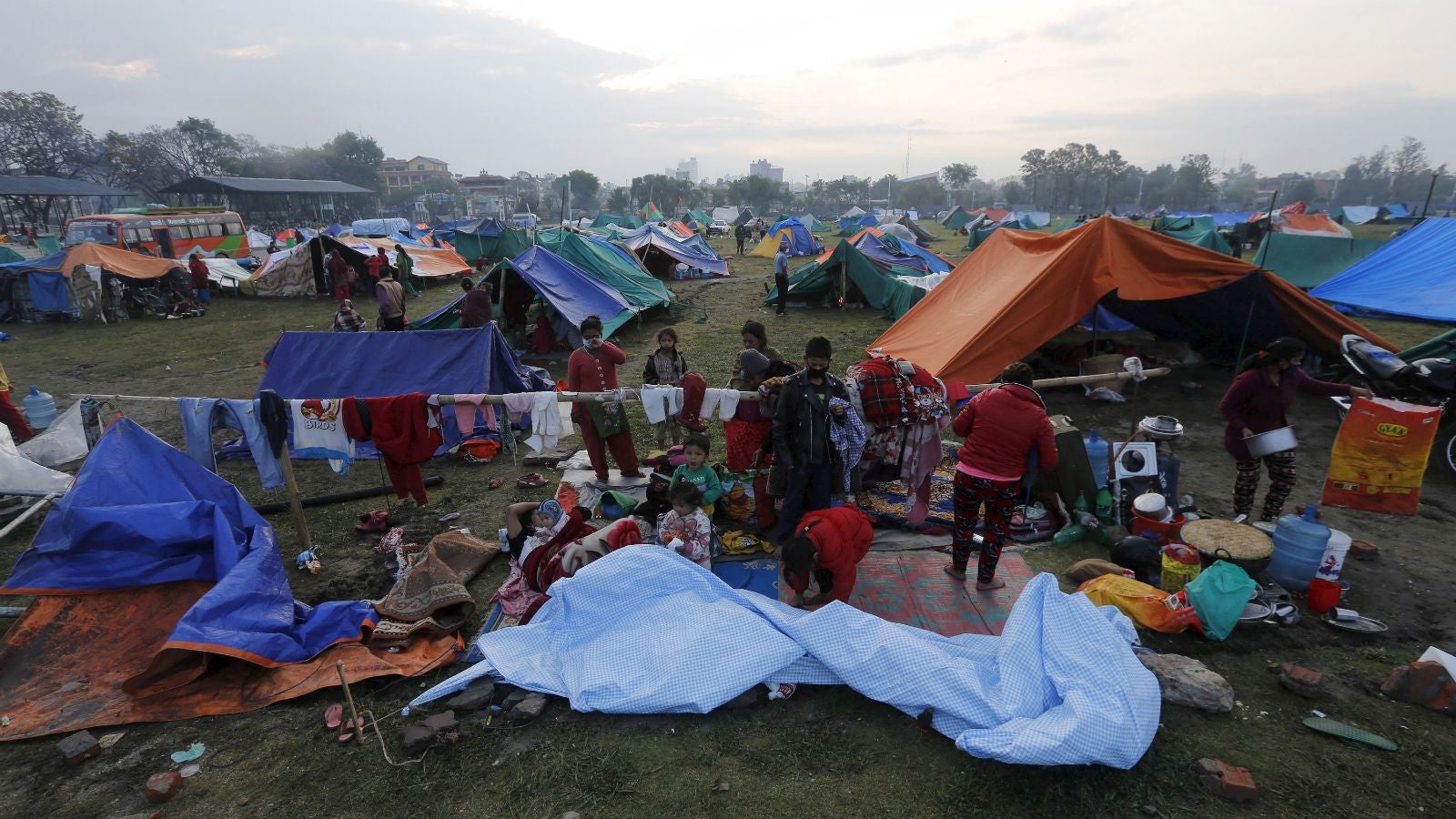After the aftershocks, Nepal’s next big worry is cholera
Already handwritten posters have begun appearing on the walls of Kathmandu, with warnings for the survivors of the deadly earthquake that razed entire sections of Nepal’s capital city on April 25.


Already handwritten posters have begun appearing on the walls of Kathmandu, with warnings for the survivors of the deadly earthquake that razed entire sections of Nepal’s capital city on April 25.
The concerns are legitimate—and the risks real.
Even in the best of times, the medical infrastructure in Nepal—one of poorest countries in the world—is scarcely enough to keep up with the demands of its population. In 2011, for instance, the country only had 27,316 health workers dealing with a population of about 28 million people, many of them living in difficult to access, mountainous settlements.
And now, as the country reels from its worst earthquake in 80 years, it faces the risk of deadly diseases that could potentially affect thousands and stretch Nepal’s medical infrastructure to the brink. Although any breach in sanitation or water contamination can trigger a number of outbreaks, including Hepatitis (A and E) and typhoid, the greatest threat is that of cholera.
“The risk is high given that a cholera epidemic is ongoing,” said G. Balakrish Nair, executive director of Translational Health Science and Technology Institute in Gurgaon. “And the monsoons are coming.”
Last year, at least two people died and more than 700 people were affected by a cholera outbreak after the monsoon rains in Nepal’s low lying Terai region. And, in 2009, a massive cholera outbreak that hit more than 30,000 people in mid-western Nepal killed 500 people.
“An outbreak of any diarrheal diseases, including cholera, would have to come from the people alive who might be carrying the bacteria in their intestine and contaminate a water source by outdoor defecation,” Dr Alejandro Cravioto, former head of the International Centre for Diarrheal Disease Research, told Quartz.
And while the Nepalese authorities and countless aid agencies working in the aftermath of the earthquake would be well aware of the risks, the situation may have become more acute as thousands of survivors have moved into temporary accommodation in Kathmandu and other cities, fearing more aftershocks.
Overflowing toilets
“If people stay in the camps for a longer time we will have a crisis of sanitation,” UNICEF’s chief water, sanitation, and hygiene coordinator in Kathmandu, Anu Gautam, told Foreign Policy (paywall).
In some relief camps, emergency toilets are overflowing with human faeces, which were exposed to the elements, even as drainage systems in other parts of Kathmandu had been damaged and destroyed by the earthquake.
“It’s a race against time to prevent a secondary public heath emergency,” international aid agency Oxfam told Quartz. “Without clean water for drinking and bathing, and facilities to deal with human waste and sewage, the risk of disease is rising every day. This is especially true for camps and other locations where large numbers of people are crowded together.”
Among other water-borne diseases, explained Nair, cholera can be the worst because its propensity to spread and kill large numbers of people, including children, is very high. “In terms of outbreaks, cholera is the biggest in scale,” he said.
Every year, according to the World Health Organization, an estimated 3-5 million cholera cases globally lead to between 100,000 and 120,000 deaths. It has an incubation period of two hours to five days, and is so virulent that it can potentially “kill within hours.”
Balancing act
Still, with its history of dealing with cholera, some experts think Nepal is better equipped to contain the disease, compared to countries like Haiti, which was ravaged by an outbreak that began months after a debilitating earthquake in 2010.
“Organisations and medical personnel in Nepal have significant experience in managing cholera, and although it would further stretch resources, I would not expect it would be difficult to contain,” Daniele Lantagne, a US-based cholera specialist and professor at Tufts University, told Quartz.
Others, like Nair, warn that an outbreak could be damaging for the already straining medical services. “If there’s an outbreak, it’ll be chaos,” he said. “It will stretch the public health infrastructure to its limits.”
But with Nepal’s government and other aid agencies still struggling to reach far flung areas hit by the earthquake, it will be a difficult balancing act to ensure that large clusters of survivors in relief camps and elsewhere have access to clean drinking water and proper sanitation facilities. The cost of failing could be terribly high.